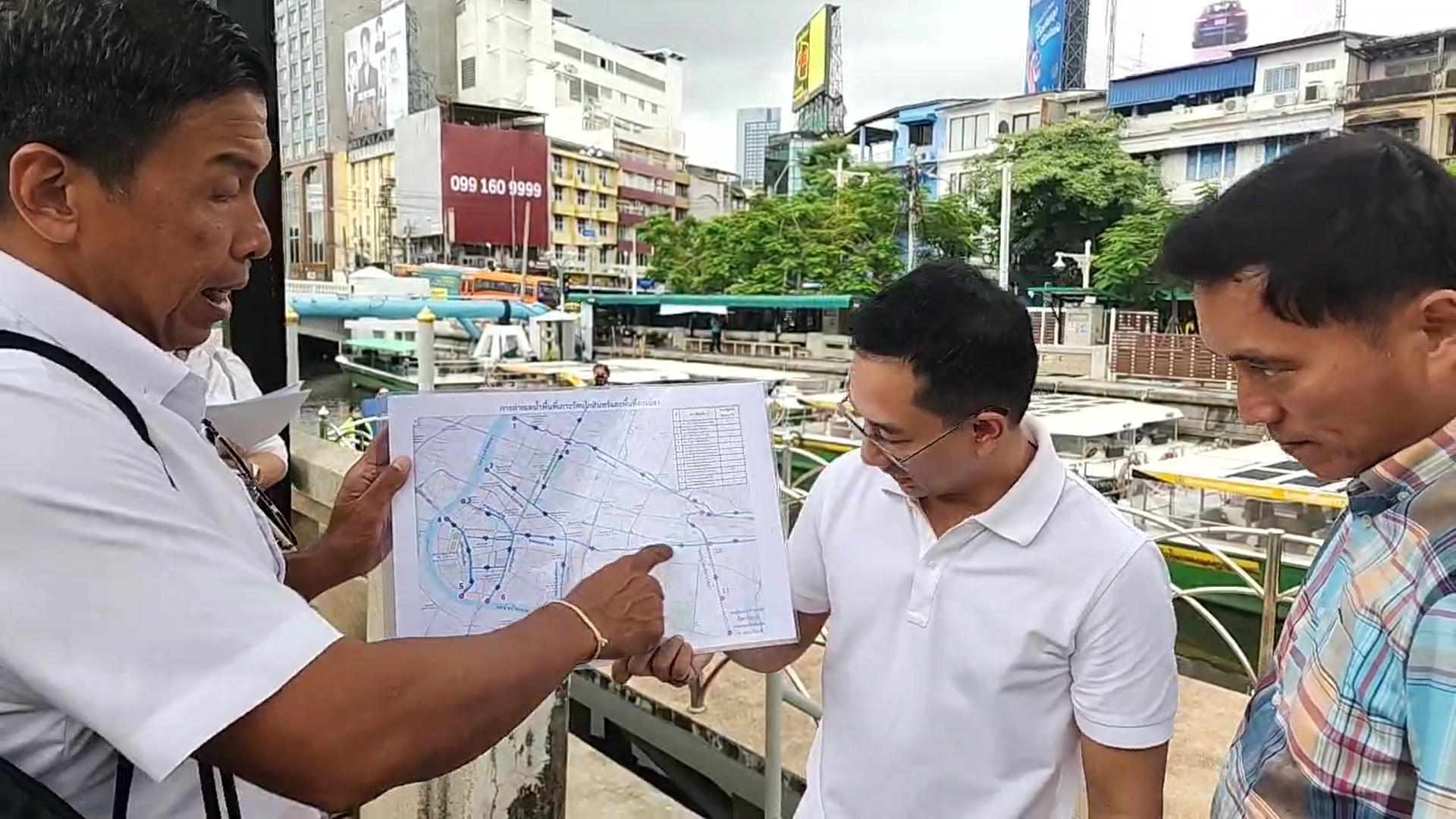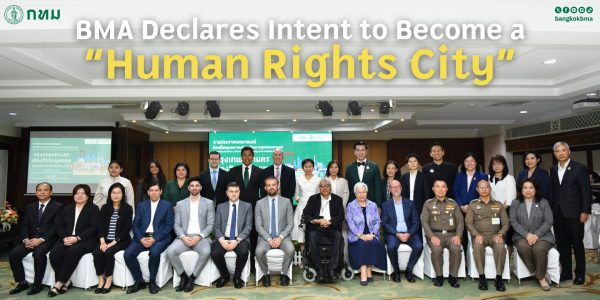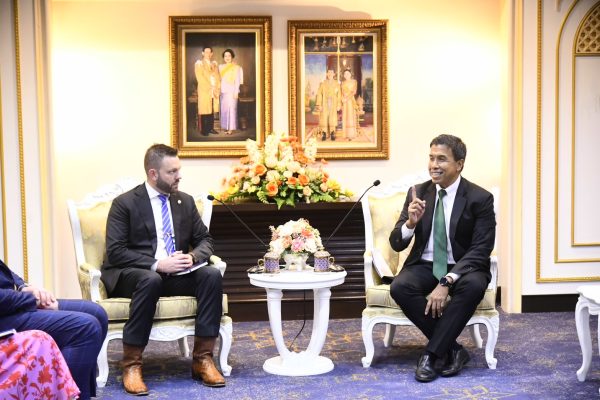
Bangkok Governor Chadchart Sittipunt on Wednesday visited Phadung Krung Kasem Canal in central Bangkok to investigate a complaint from local residents that the water gave off a foul odour.
The 5.5 kilometre-long canal runs through Pom Prap Sattru Phai, Pathum Wan, and Dusit districts.
After investigating the area, the governor said that the foul smell was caused by mud at the canal’s bottom that was releasing hydrogen sulphide, which smells like rotten eggs.
He said the smell has become more noticeable after the Bangkok Metropolitan Administration (BMA) began draining water in major canals so that they could receive rainwater during the rainy season to prevent flooding.
Chadchart added that the BMA officials have been regularly checking the quality of water in canals throughout the city. The latest test shows that the water in Phadung Krung Kasem Canal has a biological oxygen demand (BOD) value of nine, which is within the safety standard (over 20 is considered unsafe).
As the water level falls further, the BOD value will also rise, Chadchart added.
The BMA’s Drainage and Sewerage Department added that to improve the quality of water in Phadung Krung Kasem and other canals, the city has been flushing the canals with fresh water from the Chao Phraya River regularly. However, these processes must be suspended during the rainy season to prepare for possible flooding.
The department added that the flood preparation this year must be more aggressive than usual, as the Meteorological Department forecast that Thailand could be hit by storms during August and September due to the influence of a monsoon trough lying across the country.
“While the canal water level is low, the smell can be strong and the water quality could also drop, but after the rainy season passes, the BMA will continue its water rotation process to improve water quality, especially for canals in the inner city area,” said the governor.
The BMA has also implemented several campaigns to improve the quality of water in Phadung Krung Kasem and connecting canals, such as improving the landscape along the canal sides, instructing restaurants and market owners along the canal to instal grease trap tanks to reduce water pollution, expanding the network of sewers, and implementing wastewater treatment technology developed by reliable institutes.
Furthermore, BMA officials have been patrolling the canal to make sure that all households and businesses comply with the regulations of the Ministry of Natural Resources and Environment regarding standards of wastewater released into public waterways. Violators will face legal prosecution.
Currently, two facilities are responsible for wastewater treatment and improving water quality in Phadung Krung Kasem Canal, namely the Si Phraya Water Quality Control Centre and Din Daeng Water Quality Control Centre. The two facilities receive wastewater from communities and businesses in Samphantawong, Phra Nakhon, and Pom Prap Sattru Phai districts and treat it to the safety standard before releasing it to the canal.
As there are several construction projects in these districts, the city is planning to survey areas that have yet to supply their wastewater to the facilities and will build necessary waterways to make sure that wastewater from all sources is properly treated before it enters the canal.
“The BMA thanks all residents who provided their opinions and suggestions to the Drainage and Sewerage Department as well as other related agencies so that we can further improve our effort in water management,” said Chadchart. “Please rest assured that the smell is due to our preparation for the flood and does not necessarily reflect the quality of water, which we are also constantly monitoring.”




